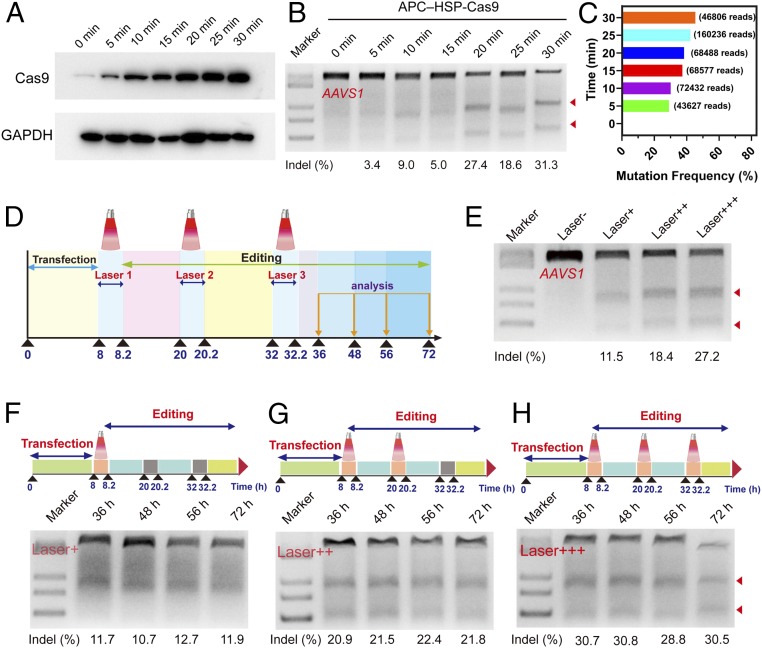Fig. 4.
APC-mediated optogenetic control of programmable genome editing in vitro. (A) Western blot analysis of Cas9 protein expression after the transfection followed by the thermal induction at different irradiation times. (B) Indel mutations of the AAVS1 locus detected by T7E1 assay. 293T cells were first transfected with APC–HSP-Cas9 complexes, and then exposed to the laser irradiation from 5 to 30 min. The indel mutations were evaluated 72 h after the irradiation. (C) Deep-sequencing analysis of mutation frequency at the AAVS1 locus. The experimental conditions were the same as those described in Fig. 3B. (D) Illustration of the transfection, irradiation, and genome-editing processes. The irradiations were conducted at 8, 20, and 32 h after the transfection, and irradiation time was 10 min each time. The indel analysis was conducted at 36, 48, 56, and 72 h. (E) Indel mutations of the AAVS1 locus detected by T7E1 assay. The irradiation was conducted at 8 h (Laser+), 8 and 20 h (Laser++), and 8, 20, and 32 h (Laser+++) after the transfection. The indel mutations were analyzed at 72 h after the transfection. (F–H) Indel mutations of the AAVS1 locus detected by T7E1 assay after exposure to irradiation for different times. The irradiation was conducted at 8 h (Laser+), 8 and 20 h (Laser++), and 8, 20, and 32 h (Laser+++) after the transfection, and the cells were harvested at 36, 48, 56, and 72 h for indel analysis. The arrowheads in B, E, and H show the cleaved DNA fragments of the target genome.

